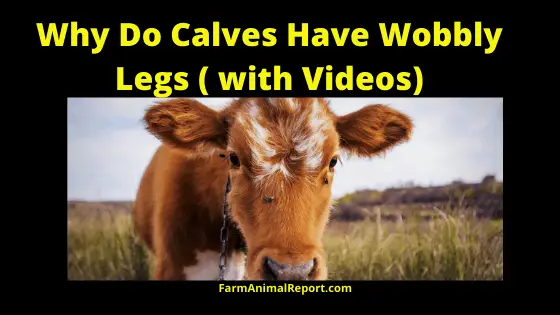Why Are My Calfs Legs Wobbly
Why Are My Calfs Legs Wobbly – If Your Calf is Struggling with Wobbly Legs it could have a problem called Contracted Tendons, Winwswept Hind Legs, or Lax Tendons. Our Articles Reference an Article w/ Videos, the Majority written by Veterinarians.
Occasionally a calf is born with wobbly legs or contracted or lax tendons. Some of these straighten out on their own with time and exercise, while others require intervention to resolve the condition. Some defects are so severe the calf must be euthanized.
The contracted tendons are the most common limb abnormality at birth and the challenging thing is trying to determine if it’s a toxic, infectious or genetic cause. Calves with these problems are much less likely to respond to treatment.
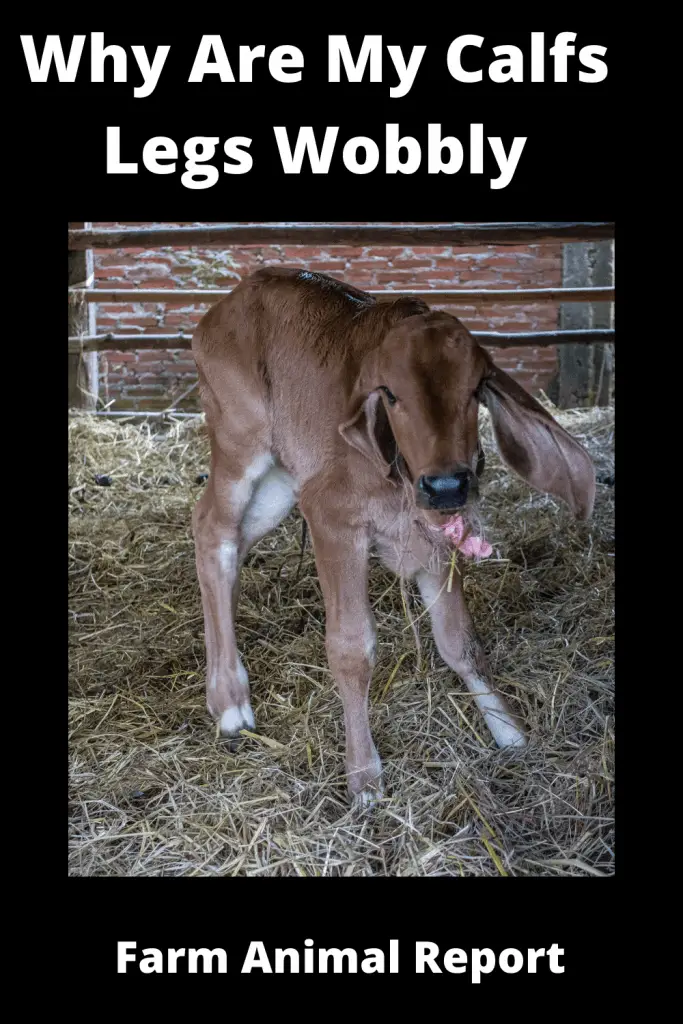
Causes – Toxic / Infectious / Genetic
Toxic Plants
Wobbly calf legs have been associated with certain toxic plants like lupine and hemlock. Alkaloids in these plants, if consumed by the dam during early pregnancy (between 40 and 70 days for lupine), can affect the developing skeletal structure of the fetus.
See Amazons Educational Resources for Cattle Diseases
The toxins act as a sedative, and if the fetus is not moving as much as it normally would, the tendons become shortened and the joints tend to become fixed. Limbs may be twisted or fixed in flexed positions and cannot straighten. Often the bones themselves develop abnormal structure and rotational defects.
Because of the multiple defects caused by these toxins, the wobbly legs are unlikely to respond to therapy. If we are reasonably certain this is the case, euthanasia is often the best option for some of these calves if the defect is severe, and the calf can’t get up and get around.
Virus
Some of these calves have mild defects, such as front legs cocked forward a little at the knee or fetlock joint, and can still move around enough to survive and grow to butcher size. Some viruses can cause contracted tendons when we see contracted tendons, we may suspect the BVD virus or Akabane virus.
Normally, in calves that have limb contractures and fused joints (arthrogryposis) from a viral infection, they also have neurological problems as well. If we think this is the case, we realize treatment will be unrewarding, and most of the time these calves are euthanized.
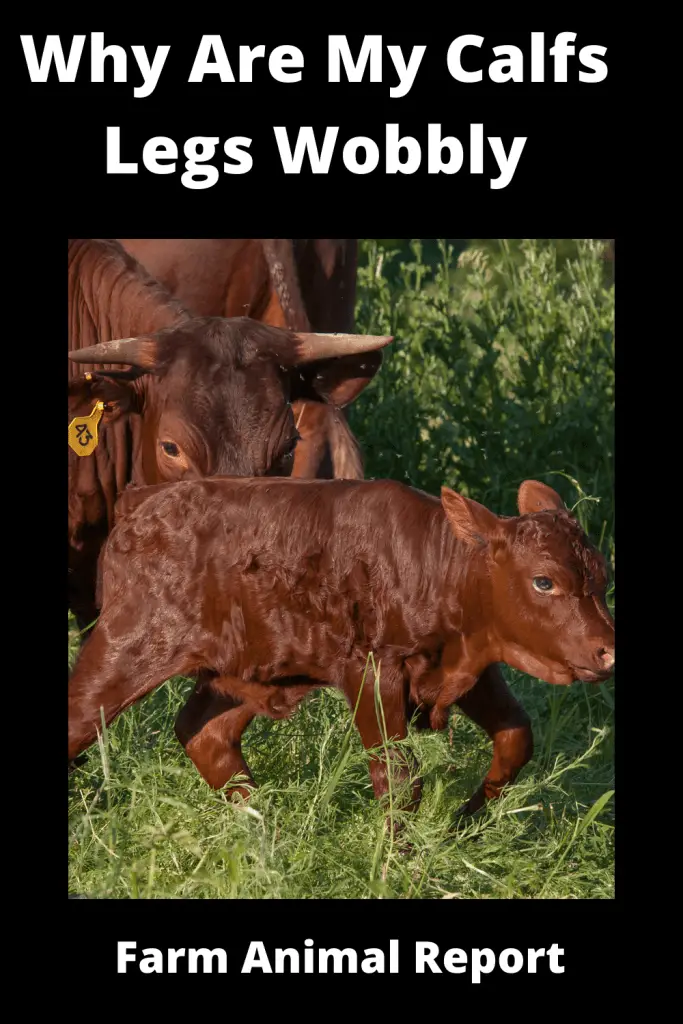
Curly Calf Syndrome
In recent years, Curly Calf Syndrome (Arthrogryposis Multiplex) has been identified in the Angus breed as a genetic problem. We see a number of calves born with arthrogryposis or badly contracted, curved legs that we feel are genetic.
Those calves will not respond to therapy; it’s a defect beyond our ability to treat. So, with wobbly calves, we try to identify the cause, to know which ones cannot be helped. A person might otherwise spend a lot of money on a calf with no improvement.
See Our Guide – Ways to Make Money Cattle Farming
Nutrition
Contracted tendons can also occur in calves because of nutritional deficiencies. We see a fair number of herds, particularly with spring calving, where the cows have become thin over winter and people are trying to push nutrition to them during the final months of gestation.
When the stockman is trying to add weight to a cow and increase body condition score in late gestation, we’re more likely to get contracted tendons in the calves — particularly if the stockman is pushing a lot of energy and protein. The growth of the fetus is exponential during the last couple of months.
The growing fetus increases the cow’s nutrition needs, and therefore, there is some benefit in making sure there are adequate nutrition and mineral available during the later stage of pregnancy.
The cow is putting a lot of calcium, phosphorus, magnesium, etc. into that calf for skeletal growth, but if we are not supplementing the cow in a balanced way, if she’s getting a lot of energy and protein but not as much in the way of minerals, she may have an oversized calf that is developed disproportionately. Essentially the calf’s muscle/ body mass grows faster than the bones.
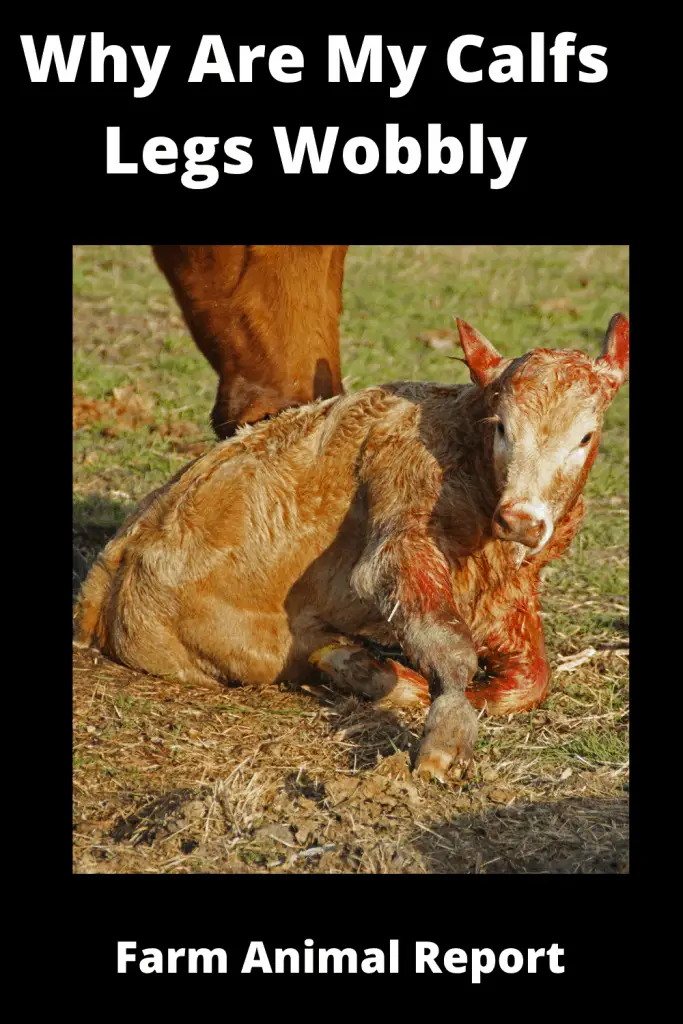
When cows are pushed nutritionally during the last months of gestation, a higher incidence of contracted tendons and dystocia’s are seen. For these calves, usually, the legs will straighten after a period of time once the calves are able to get up and walk around. Most of the time we can get these calves corrected.
Normally, the sole of the foot is flat on the ground and the hoof wall makes a 45 to 60-degree angle with the ground. In calves where the hoof angle is more than 90 degrees and the wall is so upright it goes beyond vertical and tilted forward, the calf is standing on his toes with the heel completely off the ground and the hoof wall is angled forward instead of backward.
They are at risk of damaging their legs by walking on the front of the foot and fetlock joint.
Treating Contracted Tendons
We may need to put splints on and off several times a day to help stretch the tendons. It is wise to call the veterinarian for a proper diagnosis because there are many degrees of abnormality.
Most of these calves get better after they can start putting weight on the leg, stretching the tendons as they get bigger, the legs straighten out. But it’s good to have some kind of plan to know how to help these calves. Time, and the calf’s own activity, will often help a leg straighten. Some calves have so much contraction that the fetlock joints are knuckling over and need help to keep from damaging the front of the foot and leg.
The biggest thing with using a splint is to make sure we protect the leg so the splint doesn’t rub and damage the leg. It needs good padding so the splint doesn’t rub sores on the leg, and so the tape attaching the splint to the leg doesn’t strangulate or interfere with blood supply to the leg. Some of the commercially available calf splints are quite effective.
These have the padding built-in, and have Velcro straps, but we still advocate putting padding between the Velcro straps and the leg, so they don’t tighten down on the limb.
There is a technique called a board splint, by using PVC pipe 2 to 3 inches in diameter and cut it in half lengthwise. Calves that are so upright they are broken over toward the front, beyond the vertical plane, can be splinted with these.
By drilling holes through the hoof wall at the toe, where there is no blood supply (just hard hoof), and drill corresponding holes at the end of the splint. Then run wires through the splint and the hoof wall so the splint is attached to the toe.
This board splint is on the front of the leg. When pulling it back to the leg it stretches the toe, and by taping the splint back to the cannon bone we keep that tension on it. It stretches the tendons rather quickly, and within two or three days we can usually remove the splint.
At that point, the calf walking around, putting weight on the leg and exercising will finish stretching the tendon.
Calves that Need Splints
Some calves are between those two categories — calves that can walk around and stretch the tendons on their own and calves that need splints. Some calves can stand up and walk, and the hoof wall is not beyond the vertical plane, but it is difficult for them to walk and move around.
With some of those calves, the rolled-toe shoe can be placed on them using a cement (PMMA acrylic, called Technovit). This is the same material we use to glue wooden blocks to lame cows’ feet. We attach the rolled toe shoe to the bottom of the calf’s foot with this and use the shoe to change the hoof angle, extending the toe, with a rolled edge on the front.
When the calf puts his foot down to the ground, this extension stretches the tendon. Some calves are too uncomfortable to move around and stretch the tendon on their own but not bad enough to splint, and this rolled-toe shoe will do the job.
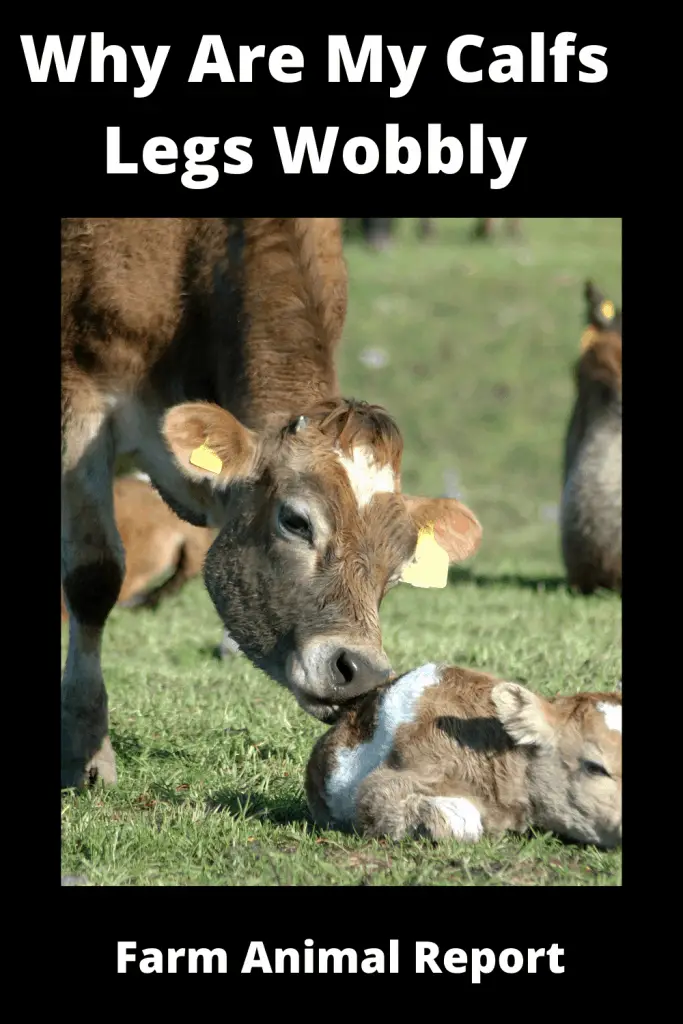
Windswept Syndrome
Some calves have crooked legs at birth, like windswept hind legs, a condition in which both legs are bent or curved off to one side, the same direction.
Most of those straighten up on their own, with time. Some are windswept to the degree that they have trouble getting up and moving around for the first couple of days, but normally they strengthen quite rapidly and we generally don’t have to do anything more than help them get up at first.
The causes of the windswept syndrome are not fully understood; it’s believed it may be linked to the abnormal position in the uterus during the last 60 days of gestation.
During that period of rapid growth in the calf, his movement in the uterus is diminished [not enough room to move around] and he is getting into position for birth. We think positioning in the uterus may be the cause of crookedness, and it may also be nutritionally influenced, similar to what happens with contracted tendons if the cow has an unbalanced ration during the last few months of pregnancy.
Cows are often brought in from large pastures to a smaller maternity area during the last 30 days. I don’t feel this is associated with the problem, but there’s been some discussion about this. We don’t know if there’s a genetic reason.
We tend to see windswept syndrome more frequently in larger calves, and in bull calves, and long-legged calves. The good thing about this problem, however, is that the calves usually straighten on their own.
Lax Tendons
Lax tendons Occasionally a calf is born with weak tendons, a condition in which the fetlock joint drops down and the calf is walking on his heels and dewclaws, with toes pointing upward. In many cases, exercise will strengthen the tendons, and the legs straighten up.
Lax tendons are sometimes seen in “fawn” calves [a genetic defect is known as Contractural Arachnodactyly, in which the leg bones seem too long]. Most of these calves have a long, arched back and short underline, with stifles and elbows, close together, and hind legs bent at the hock joint with hind feet too far forward. The calf has long pasterns and walks on his heels and fetlock joints.
Fawn calf syndrome is thought to be an inherited genetic defect. Those calves have a better prognosis than curly calves, just because the fawn calves can usually get up and move around. Many of the fawn calves can survive, but this is a limb problem that can’t be resolved with treatment
World Cattle Breeder Associations
| Cattle Association | Location | Link |
|---|---|---|
| National Cattleman's Beef Associations | United States | NCBA |
| United States Cattlemans Association | United States | USCA |
| Ohio Cattlemans Association | Ohio | OCA |
| American Angus Association | United States | AAA |
| United Kingdom Cattle Associations | UK | UKCA |
| Australia Cattle Associations | Australia | ACA |


